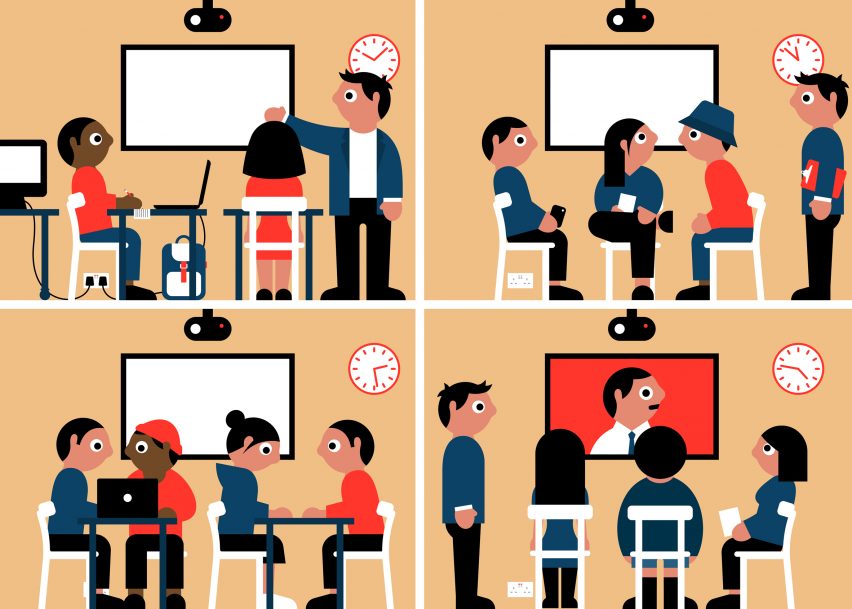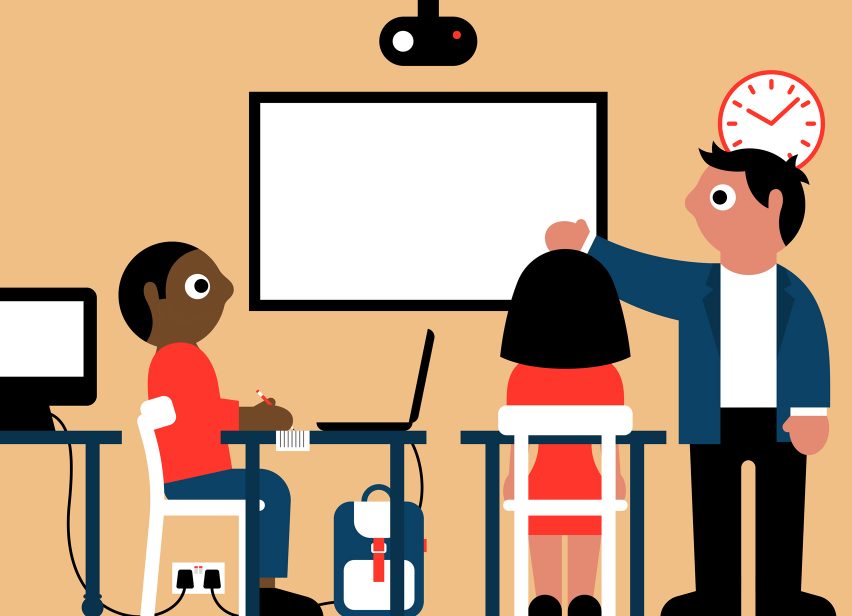
Universities undergo "quiet revolution" as they switch to open-plan learning, Haworth report finds
Haworth white papers: higher education institutes around the world are undergoing radical change as they swap old-fashioned lecture rooms for flexible learning spaces, according to an expert in educational environments.
A global shift towards large, open-plan "learning studios" is transforming universities and colleges as they adapt existing buildings and build new ones.
The trend is forcing many institutes to look beyond their traditional city-centre locations to more suburban locations where there is more space to provide these more land-hungry facilities.
"It's a quiet revolution," said Andrew Harrison of Spaces That Work, a consultancy that specialises in learning environments, pointing out that the change is part of the same shift that has seen the workplace transformed by the rise of flexible shared workspaces.
"Education on every level is moving from passive learning with a speaker at the front and everyone just listening, to much more active learning where people are more engaged in the processes of learning."
Shift to "active learning"
"Active learning" involves activities including group work and discussions, meaning that learning spaces need to be able to transform quickly and easily from lecture mode to configurations more conducive to those activities.
This, together with technological changes – for example students using tablets and laptops, and lecturers using digital whiteboards and video conferencing – is forcing institutions to transform their estates.

"All the spaces in established institutions have been built around traditional lines, so classrooms are based around a number of desks, a number of chairs and all that sort of thing," said Harrison, who has co-authored a discussion paper on learning studios for office furniture giant Haworth.
"All the universities are interested in and concerned about how can they can adapt their existing spaces to support more active learning."
Many of the features of learning studios are already commonplace in junior and secondary schools, and another driver of change is that students themselves expect to be taught in more contemporary spaces. The design of education spaces is therefore a key part of universities' marketing strategies.
"It's really ironic that a lot of the innovation and higher education is lagging behind the way that schools use technology," Harrison said. "Schools are actually very advanced in many ways in terms of how they use technology and have flexible spaces."
Higher education set to be transformed
The discussion paper, called Learning Studios: A New Generation of Space in Higher Education, describes the changing nature of higher education spaces and sets out a range of design principles to help architects, designers and university leaders plan for change.
"The whole landscape of space use is undergoing a radical transformation," the paper says, pointing out that the rise of more flexible space that has transformed the workplace is now set to transform higher education.

"In higher education the shift is marked by an increased emphasis on the campus's ability to provide an appropriate environment for new ways of learning," it says.
"One key space type to emerge in response to these changed pedagogical demands is the learning studio – flexible, adaptable and reconfigurable technology-enabled space capable of supporting both didactic instruction and small group working".
The paper states that the education sector is witnessing the rise of new types of "blended" space that combines teaching, learning and research functions.
However existing spaces in institutions are "no longer equipped to respond to the frequency of social, political, economic and technological change".
It also identifies a lack of knowledge about how to design learning spaces. "While there are several global benchmarks in learning studio models currently, there is a greater need to instil core design principles of what makes a good learning studio with university leaders, facility managers, architects and interior designers".

The discussion paper aims to address this last point, Harrison said. "The idea of the paper we did with Haworth was to say, well, how can we make these spaces better? How can we help institutions and academics think through the issues that they need to do to move from a passive to a move active learning approach?"
Modernising outmoded learning spaces is a key issue for many older institutions.
"A difficulty for existing institutions is you you've got 100 years of buildings and constraints, it's very difficult in some places to retrofit this back in to everything," Harrison said. "How do you make the best of what you've got? You need to build new buildings, or modifying existing buildings in stages. It's a big project."
Education moves out of cities
A key issue is that learning studios require more space per student than traditional spaces.
A typical classroom layout with the teacher at the front and chairs arranged in rows requires around 1.5 square metres per student. Introducing desks and computers raises this to 1.8 square metres per student, while a fully fledged learning studio requires around 2.75 square metres per student.
"If you want to become more innovative in your learning and teaching process, the space is suddenly really taken up," Harrison said. "A 30-person space becomes only big enough to hold 20 people for active learning."

This is one reason why many institutions are building new campuses in less central areas.
"In London we've got UCL building a new campus in Stratford, Imperial College is building a new campus in Hammersmith, Kings College is doing a new campus in Canada Water," said Harrison. "They're all going out in different directions to start with a clean slate, to think about the future subjects they want to teach and how they want to do it."
Once they have introduced learning studios, institutions need help to make the most of them, Harrison said.
"There's absolutely no point in innovating a space unless you actually innovate in the learning and teaching approach," he said. "So you've got to help the faculty, the academics to deliver using the technology and the space in different ways. Otherwise they just put chairs back into rows."
Illustrations are by Stephen Cheetham.